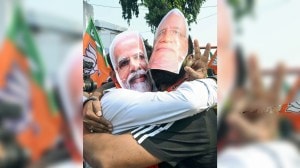SC to states, UTs: Notify rules for Sikh marriage registration in 4 months
The order came on a petition which said while some states had framed the rules in accordance with the 2012 amendment, some others were yet to do so.
 Disapproving the delay, the SC said, “In a secular republic, the State must not turn a citizen’s faith into either a privilege or a handicap."
Disapproving the delay, the SC said, “In a secular republic, the State must not turn a citizen’s faith into either a privilege or a handicap."THE Supreme Court has asked states and UTs, which are yet to frame rules for registration of marriages solemnised under Sikh rites (Anand Marriage Act, 1909), to do so within four months.
The 1909 Act was brought to recognise the validity of marriages performed through the Sikh ceremony of Anand Karaj. By the Amendment of 2012, Parliament inserted Section 6 of the Act, casting a duty upon the respective state governments to make rules to facilitate registration of such marriages. In its September 4 order which was made available Thursday, a bench of Justices Vikram Nath and Sandeep Mehta directed that until such rules are notified, the states and UTs “shall ensure that marriages solemnised by Anand Karaj are received for registration under the prevailing marriage-registration framework without discrimination”.
The order came on a petition which said while some states had framed the rules in accordance with the 2012 amendment, some others were yet to do so.
Disapproving the delay, the SC said, “In a secular republic, the State must not turn a citizen’s faith into either a privilege or a handicap. When the law recognises Anand Karaj as a valid form of marriage yet leaves no machinery to register it, the promise is only half kept. What remains is to ensure that the route from rites to record is open, uniform and fair.”
The court said the availability of registration bears directly on equal treatment and on orderly civil administration. “A marriage certificate enables proof of status for residence, maintenance, inheritance, insurance, succession and the enforcement of monogamy, and it particularly safeguards the interests of women and children who depend on documentary proof to claim legal protections. Uneven access to a statutory facility across States and UTs produces unequal outcomes for similarly situated citizens.”
The bench said, “In a secular framework that respects religious identity while ensuring civic equality, the law must provide a neutral and workable route by which marriages solemnised by Anand Karaj are recorded and certified on the same footing as other marriages.”



- 01
- 02
- 03
- 04
- 05




























